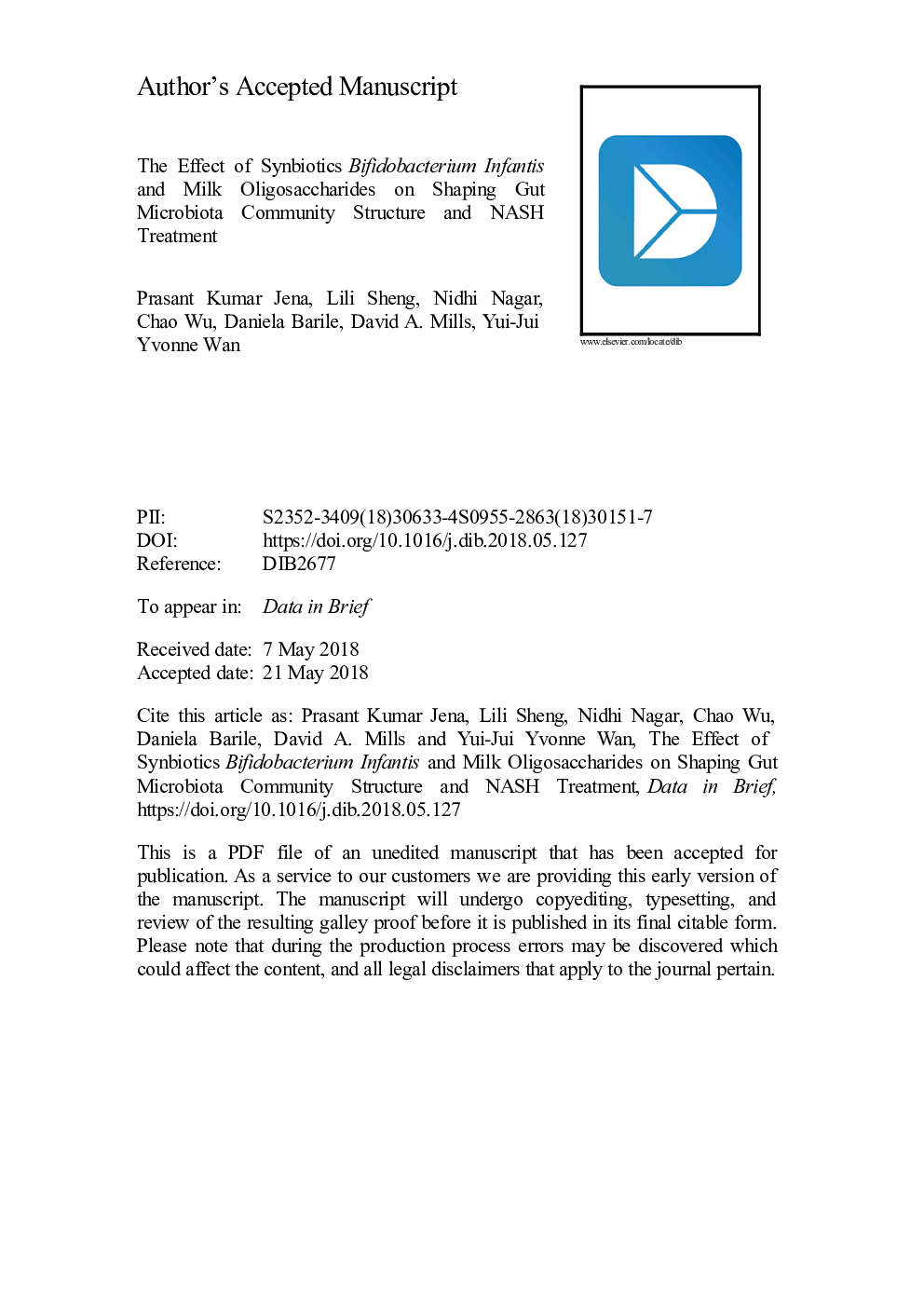| کد مقاله | کد نشریه | سال انتشار | مقاله انگلیسی | نسخه تمام متن |
|---|---|---|---|---|
| 6596671 | 1423849 | 2018 | 10 صفحه PDF | دانلود رایگان |
عنوان انگلیسی مقاله ISI
The effect of synbiotics Bifidobacterium infantis and milk oligosaccharides on shaping gut microbiota community structure and NASH treatment
دانلود مقاله + سفارش ترجمه
دانلود مقاله ISI انگلیسی
رایگان برای ایرانیان
کلمات کلیدی
موضوعات مرتبط
مهندسی و علوم پایه
مهندسی شیمی
مهندسی شیمی (عمومی)
پیش نمایش صفحه اول مقاله

چکیده انگلیسی
Probiotic Bifidobacterium longum subspecies infantis (Bifidobacterium infantis) consumes human milk oligosaccharides (MO) and protects intestinal permeability thereby having anti-inflammatory effects (Underwood et al., 2015; Bode, 2006; Asakuma et al., 2011) [1-3]. Via the gut-liver axis, gut barrier disruption and dysbiosis lead to hepatic inflammation (Sheng et al., 2017; Jena et al., 2017) [4,5,6]. Our published data revealed that butyrate, as well as synbiotics of B. infantis in combination with MO, had protective effects against cancer-prone non-alcoholic steatohepatitis (NASH) mouse models, i.e., Western diet (WD)-fed bile acid receptor FXR (farnesoid x receptor) knockout (KO) mice (Jena et al., 2018) [6,7]. In addition, MO was particularly effective in increasing the blooming of butyrate-generating bacteria (Jena et al., 2018) [7]. In the present study, we further showed that the reduced ileal short chain fatty acid (SCFA) signaling found in WD-fed FXR KO mice could be reversed by B. infantis and/or MO treatment. Moreover, ileal mRNA levels of SCFA receptors i.e. Gpr41 (Ffar3), Gpr109 (Hcar2), and Gpr43 (Ffar2) were increased in B. infantis and/or MO-treated mice suggesting increased SCFA signaling (Fig. 1). Further, nuclear magnetic resonance (NMR) data revealed that MO and B. Infantis plus MO increased intestinal acetate, propionate, butyrate, and valerate levels (Fig. 2). In addition, B. infantis and/or MO reduced the abundance of genus Bilophila and the relative copy number of bacterial genes including dissimilatory sulfite reductase (dsrA) and methyl coenzyme M reductase A (mcrA), which were all increased in cancer-prone FXR KO mice (Fig. 3).
ناشر
Database: Elsevier - ScienceDirect (ساینس دایرکت)
Journal: Data in Brief - Volume 19, August 2018, Pages 1025-1029
Journal: Data in Brief - Volume 19, August 2018, Pages 1025-1029
نویسندگان
Prasant Kumar Jena, Lili Sheng, Nidhi Nagar, Chao Wu, Daniela Barile, David A. Mills, Yui-Jui Yvonne Wan,